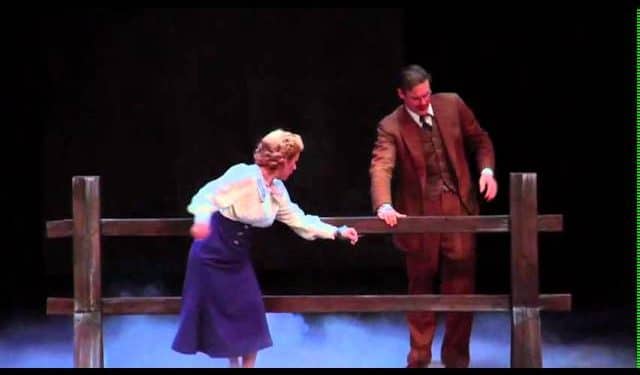The 39 Steps is an adventure novel by John Buchan, written in 1915. It has been adapted for the screen more times than most novels, with the most recent adaptation being a TV movie in 2008. The most famous and best loved version is Alfred Hitchcock’s 1935 movie starring Robert Donat and Madeleine Carroll.
The story follows Richard Hannay as he is swept into a plan to foil international spies trying to start a war. The military secrets that the spy ring is trying to steal involve a secret prototype for either a ship or a silent airplane engine, depending on the version and the level of modernization.
In this article, we’ll break down some of the key moments in the story and compare how these highlights stack up across the different versions.
What are the 39 steps?
One of the most interesting difference between the various versions of The 39 Steps is just what those 39 steps are. Since it’s the title of the novel, it would seem safe to assume that they would be one of the only consistent features across all of the versions. In fact, they’re one of the most varied.
In the original novel, The 39 Steps refer to a set of stairs, leading to the sea, that the spies are planning to use for their escape. In the 2008 version, they have kept this the same. In the 1978 film, they are still steps but instead of being used for an escape, they are the steps up to the clock in Big Ben, where a bomb has been placed.
One of Hitchcock’s biggest innovations in the plot was to have The 39 Steps refer to the spy ring itself. Instead of being a location, The 39 Steps is the shadowy organization that Hannay is trying to foil. The 1959 version, directed by Ralph Thomas, kept this detail the same.
Exposing the spy leader
In some versions, the conclusion of The 39 Steps has Hannay exposing the spy ring as he is about to be arrested. In both Hitchcock and Thomas’s films, this takes place during a performance at a music hall.
For more modern audiences, the music hall is no longer an effective location since they don’t really exist today. Instead, more modern locations have been substituted. A casino is a perfect setting because the story does include themes of chance and the impact that small decisions can have on a life.
The roulette wheel is particularly prominent in these versions since it’s an iconic casino image that immediately sets the scene, and because it conveys the randomness of life and the risks we take. The live roulette games on LeoVegas and other online casinos or the roulette wheels at any of today’s London casino have changed so little that they can still take players back to the days of Hitchcock and Hannay.
Escape from the train
Throughout the entire story of The 39 Steps, Hannay isn’t just hiding from and chasing the spies. He’s also on the run from the police after being blamed for the murder of the secret service agent who got him involved in the situation in the first place. This adds an extra layer of peril and drama to the plot.
The most dramatic scene in Hitchcock’s version features Hannay escaping from the police by sneaking off the train in the middle of the Forth Bridge, and climbing across the girders to safety. The scene is repeated and expanded in the Thomas version, with Hannay using a service hatch to access the lower girders beneath the tracks.
One of the reasons that the scene works so well is that the Forth Bridge is instantly recognizable. It holds a similar iconic status in the United Kingdom as the Golden Gate Bridge does in the United States. Audiences would have immediately understood how dangerous and terrifying the situation was.
The clock scene
The 1978 version of the film, directed by Don Sharp and starring Robert Powell as Hannay, makes several changes to the story that audiences had become familiar with. In most cases, it ditches the changes that Hitchcock made and returns to the novel’s plot. However, it does add one very dramatic flourish at the conclusion.
Instead of military secrets being stolen, the spy plot involves blowing up Big Ben and the Houses of Parliament. To foil this plot, Hannay must stop the clock from reaching 11:45. This results in one of the most exciting moments in the film, with Hannay clinging to the minute hand of the clock, hundreds of feet above the streets of London.





